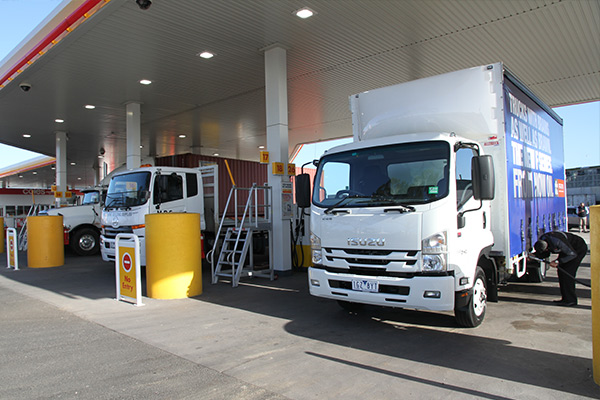Isuzu's fuel economy claims examined as new four cylinder engine goes on road test through city and country
Among the deluge of new developments that make up Isuzu’s expanded medium-duty F-series range are a couple of new four cylinder models which combine impressively tenacious performance with a healthy respect for fuel economy.
Spanning gross weight capacities from 10.7 to 14 tonnes and powered by a 5.2-litre, four-pot engine – effectively a shortened version of the 7.8-litre six tucked under other members of the latest F-series line-up – Isuzu doesn’t pull any punches when praising the attributes of the five models in its new four cylinder family.
Yet apart from spruiking the environmental and efficiency credentials of the twin-turbocharged and intercooled plant it calls the 4HK1, Isuzu is quick to point out that the engine also uses a dedicated fuel injector in the manifold to avoid the regeneration issues which plagued earlier models fitted with a diesel particulate filter.
“What we’ve achieved,” says Isuzu Australia engineering chief Simon Humphries, “is a clear leap forward in engine technology and undeniable evidence of the trend towards higher output and lower displacement power plants.”
The four cylinder engine comes in two performance ratings:
- 154kW (207hp) at 2,400 rpm accompanied by 726Nm (535 lb-ft) of torque at 1,600rpm
- 177kW (237hp) at 2,400 rpm with 765Nm (564 lb-ft) of torque at 1,600 rpm.
First indications of the engine’s gritty determination came during an F-series drive day in Brisbane a few months back.
However, intrigued by the performance displayed in short stints around Brisbane, we wanted another crack to not only gauge if first impressions were accurate but also determine if the company’s claims for exceptional fuel economy were valid.
The short answer is ‘yes’, both the impressions and the claims are right on the money.
The test truck was an FRR 110-240 (177kW/765Nm) model and, according to Isuzu, loaded to around 80 per cent of its 11 tonne gross vehicle mass, or roughly 8.5 tonnes.
The test route started at Isuzu’s Port Melbourne (Vic) headquarters in the midst of peak hour morning traffic and proceeded along the south-eastern freeway before branching off into the ‘burbs. Then up ‘The Slide’ through Kinglake National Park before a coffee break at Glenburn Roadhouse and heading back much the same way.
All up, 213km of suburban slog and country canter.
Isuzu claims for good fuel economy from its new four cylinder engine were verified in a road test covering city and country conditions.
Coupled to the engine was Isuzu’s latest six-speed automated transmission called the AMT-TC which adds a torque converter to enhance lift-off capability and smoothen overall shift quality. For the record, the automated box uses the same gear ratios as the standard six-speed manual gearbox.
Yet as we’ve reported before, there’s far more to the expanded F-series family than engines and gearboxes.
The list of standard features runs from anti-lock brakes and anti-skid regulator to a hill start aid, electric mirrors, cruise control, cornering lamps and in the case of models with the 4HK1 engine, an idle-stop system to enhance fuel economy. Wisely, the idle-stop function can be switched on or off through a dash-mounted switch.
And for the record, I’m not a fan of the idle stop system. Isuzu’s or anyone else’s.
There’s just something in my head that finds it completely impractical for a system to constantly switch off a diesel engine to save a few thimbles of fuel while significantly increasing demands on the battery and starting system.
That aside, there’s no question that comfort and convenience rate highly in all versions of the new F-series.
As for performance of the 4HK1, it’s an engine which quickly obliterates the notion that four cylinder engines need to run high into the rev range to replicate the pulling power of their bigger brothers.
This engine hangs on and digs deep. Surprisingly deep, demonstrating that early impressions of an engine with gritty resolve were not imaginary.
Up ‘The Slide’, for instance, the engine hung on in top gear far longer than expected, dragging back to 1,400rpm in top gear before the system swapped back to 5th for an easy run to the crest.
The other part of the performance equation, however, is the AMT-TC transmission which certainly does the trick when it comes to smoothing out the shifts and delivering a far more refined and responsive performance, particularly from a standing start.
Together, the engine and automated transmission form an extremely compatible package.
As for fuel economy, the truck drank at the rate of 4.9km/litre, or just a sip under 14 miles per gallon in the old measure. Given the demands of the day it was an impressive figure.
All up, Isuzu’s new four cylinder offering is an efficient, innovative addition to a medium-duty brand which long ago made market leadership its own.



